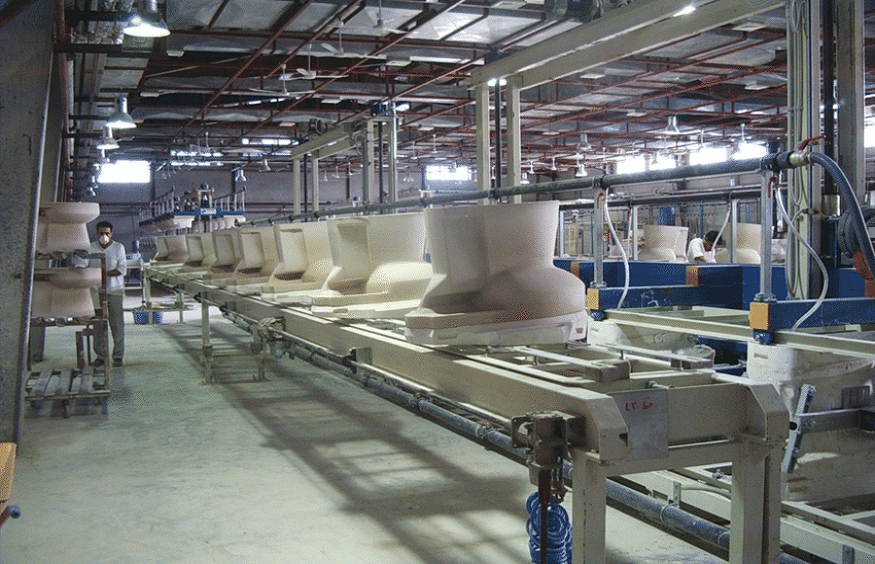Industrial settings continue to prioritise welding safety. By implementing thorough safety procedures, the best industrial machinery services put workers’ health first. In addition to safeguarding workers, putting in place appropriate safety measures also guarantees excellent job results. Providers must uphold stringent safety regulations since industrial welding entails several risks.
Personal Defence Gear
With the right personal protective equipment, welding safety is built from the ground up. Professional services for industrial machinery guarantee that workers have access to the right safety equipment. All skin that is exposed should be covered with clothes that resist flames. Robust leather gloves guard hands against cuts and burns. Eye damage from radiation and flying sparks is prevented by wearing safety glasses with the appropriate shade. Steel-toed boots also act as electrical insulators and guard against items dropping.
Beyond simple safety eyewear, face protection is essential. Eliminating eye strain from bright light is possible with the right welding helmet and shade lens. To improve efficiency and safety, some cutting-edge helmets can automatically adapt to changing lighting conditions. When welding produces hazardous vapours, especially in small places, respiratory protection becomes essential.
Safety in the Workplace Environment
Ensuring a safe welding environment is achieved through top industrial machinery services. Cleanliness and the absence of combustible materials are essential for the work environment. Nearby workers are shielded from bright light and sparks by fire-resistant barriers or screens. Removing toxic gases and imparting clean air are performed using airflow. In the event of an emergency, the first useful resource substances and fireplace extinguishers are usually nearby.
Welders can view their job and be alert in their surroundings while their workspace is properly lit. To minimise electrical risks, the floor remains dry around welding locations. Signs inform people of possible risks and the need for protective gear. Before mishaps, possible hazards are found during routine inspections.
Upkeep and Inspection of Equipment
Safety is greatly impacted by the necessity of routine maintenance on welding equipment. For all welding equipment and machines, industrial machinery services set up rigorous inspection schedules. Checking for loose connections, worn-out cables, and adequate grounding is part of this. To avoid mishaps, malfunctioning equipment is promptly fixed or replaced.
Cylinders that hold gas need particular care. They must be appropriately fastened and kept out of direct heat. Regular exams are performed to check for leaks or damage on hoses, regulators, and valves. Optimal performance and hazard prevention are guaranteed by proper handling and storage of welding supplies.
Education and Certification
The foundation of safe welding practices is thorough training. Welders are guaranteed adequate training on safety procedures and equipment operation by industrial machinery services. Comprehending possible risks and being prepared for emergencies are part of this. Updated safety information and reinforcement of best practices are achieved through regular refresher courses.
Location and kind of welding determine the specific certification criteria. To maintain high safety standards, however, superior services frequently go above and beyond the bare criteria. The tracking of compliance and identification of opportunities for improvement is facilitated by the documentation of training and certificates.
Be Ready for Emergencies
Events can still happen despite prevention measures. Planned emergency responses are created by top industrial machinery services. This covers the specified safety zones and evacuation protocols. The location of emergency equipment and basic first aid are taught to workers. Frequent drills guarantee that all participants are aware of what to do in different emergency scenarios.
Responding to incidents quickly is made possible via clear communication channels. Contact details in case of emergency remain available. Protocols for reporting incidents aid in seeing trends and averting mishaps later. Adequate safety practices are the result of post-incident analysis.
Electrical Safety Procedures
In welding processes, electrical hazards provide serious concerns. All equipment should be properly grounded, according to quality industrial services. Before each use, routine maintenance is performed on power sources and cables. Electricity-related symptoms are identified by welders, and they are trained to know when to cease working. Worker shock is prevented by proper insulation. Adding more safety layers are circuit breakers and ground fault interrupters. Special safety measures are taken to mitigate specific electrical threats when welding in small areas.
Safety Concerns with Chemicals and Materials
Severe chemicals and materials are used in many welding procedures. Best services offer comprehensive details regarding the drugs that are used. To prevent dangerous reactions, handle incompatible materials carefully. Every worker still has access to safety data sheets.
To safeguard the environment and workers, welding waste disposal must adhere to tight regulations. Trash of various kinds is carefully collected in designated bins. Equipment for responding to spills is kept prepared for quick deployment as required.
Health Guidance and Assistance
Major industrial machinery providers are concerned about the long-term health impacts of welding exposure. Early detection of any problems is facilitated by routine health checks. Tests of hearing look for harm from equipment that is too loud. Examinations of the eyes guarantee that safety precautions are adequate.
During lengthy welding operations, ergonomic considerations help to reduce strain and injury. Reducing physical stress involves proper positioning and taking breaks. Workplace safety is enhanced by support for employees’ general well-being.
Reporting and Adherence
To receive the best industrial machinery services, thorough safety record-keeping is crucial. Incident reports, training records, and equipment maintenance logs are all included in this. Industry norms and regulations are adhered to through routine safety audits. Finding patterns and places that want improvement is made easier with documentation.
To meet evolving difficulties, safety policies are regularly reviewed and updated. Safeguards may need to be modified in response to technological or regulatory changes. Sustaining continuous safety measures is facilitated by keeping all paperwork up to date.
Ongoing Safety Practice Improvement
Safety measures are continuously improved by the best industrial machinery services. When employees provide feedback, real-world changes result. The potential safety benefits of new technology and practices are evaluated. Better safety measures are developed via industry-wide learning from occurrences.
Worker representation on safety committees aids in identifying issues and potential fixes. Adherence to protocols is encouraged to continue when effective safety practices are acknowledged. With continuous progress and attention, the objective is still zero incidences.
Conclusion
Welding safety is first and foremost for top industrial machinery services. They make workplaces safer by using all-encompassing strategies that include the right tools, instruction, and procedures. Workers are safeguarded while obtaining high-quality outcomes through ongoing improvement and attention to all safety-related factors. Excellent industrial services are characterised by their professionalism and dedication to safety.

